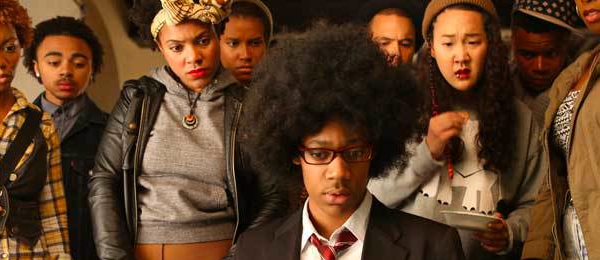DIVERSITY SPEAKS: A Black Face in a White Place
Two years ago, I poached a script called Dear White People from an assistant over at Sony. I’d just begun as Stephanie Allain’s assistant and the filmmakers wanted me to set a meeting. As the newly appointed gatekeeper, I couldn’t stick my neck out without giving the script a few reads. The filmmakers had apparently been reaching out to Stephanie and until this time had been unable get a meeting. Each time I read the script, I became more excited and I made it my mission to get her eyes on it. Their mind-blowing trailer that was amassing views by the millisecond gave my pitch the boost it needed. After reading it, Stephanie fell madly in love with the script and later with Justin Simien the talented first time writer/director and his team of producers: Lena Waithe, Ann Le and Angel Lopez.
So what next, with close to a million YouTube hits and the world stirring over the provocative title of the film, thousands of dollars raised on Indiegogo and a superstar executive producer? Stephanie then brings on producer Effie Brown and later Julie Lebedev comes aboard to create the ultimate powerhouse team and the film is off to the races. A year later the Dear White People team has cast the film, found the money, created a plan and shot a kick-ass film that will be premiering in Sundance!
And in the two years since I’ve read the script I’ve been thinking about one of the major questions the film explores: what does it mean to be a black face in a white place? In general it’s a precarious position. I mean seriously, what do you do when a well-meaning colleague genuinely uses Ebonics/hip-hop phrases in an effort to relate to you? This really happens and it’s neither a rare nor an enjoyable situation.
And in film, being a black face in a white place is often even trickier. I’ve read John Singleton’s article in The Hollywood Reporter speaking to the troubling fact that white directors are increasingly making films about black people and excluding black perspectives from the above-the-line creative process. I’ve heard the criticisms loud and clear about the films that are getting Oscar buzz with black characters playing subservient roles—maids, slaves, butlers. And that by and large these images dating back to Hattie McDaniel are the only representations of blackness that the vast majority of the Academy can bear to observe.
These truths are the bitter to the sweetness of life. The sweetness being that despite the morose reality there is always a beam of light that finds its way to the end of the tunnel providing just enough hope to keep moving forward. Today that light is Dear White People.
Justin breathed life and specificity into his characters that demonstrates his skill as a storyteller but also his unwillingness to yield to the facile archetypes gifted to him by mainstream media and pop culture. As much as the title addresses white people, the film is a love letter to all the black faces in white places asserting that we don’t have to neatly fit into one box. That we are allowed—in our art and in our lives—to be as beautifully complex as the many shades of brown and black that unite us.
By Mel Jones / Dear White People Associate Producer / Los Angeles Film Festival Special Projects Manager

